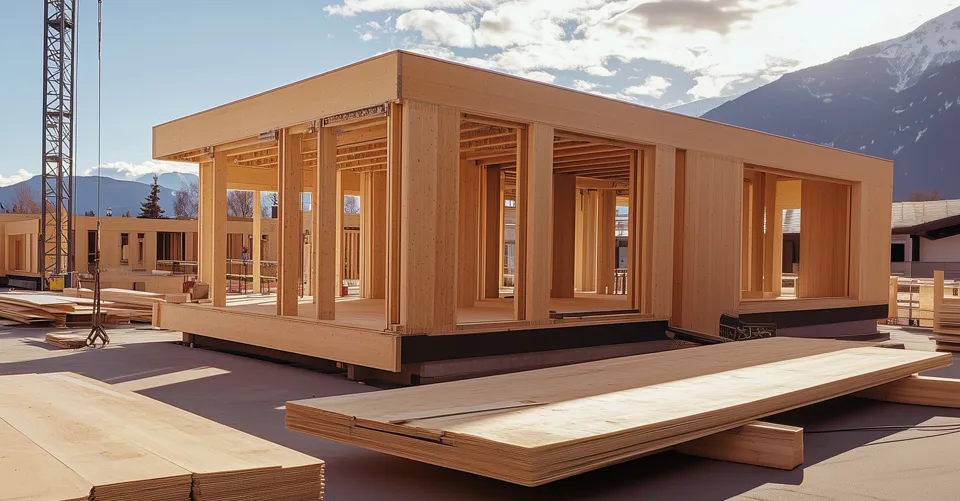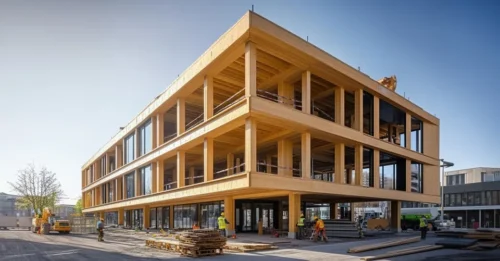The Role of Cross Laminated Timber in Sustainable Construction
Cross Laminated Timber (CLT) is transforming sustainable construction, offering environmental, financial, and structural benefits that make it a top choice for investors and developers. As the demand for eco-friendly buildings grows, CLT is emerging as a superior alternative to traditional materials like concrete and steel.
With global initiatives focusing on carbon reduction, green building certifications, and sustainable urban development, CLT provides a durable, lightweight, and environmentally responsible solution. This guide explores seven key benefits of Cross Laminated Timber in sustainable construction and why investors should consider incorporating it into real estate portfolios.
📌 Learn more about CLT’s structure and applications on ACT Securities.
📌 Explore further insights on cross laminated timber role in sustainable construction at Zenhaus.
1. What is Cross Laminated Timber (CLT)?
CLT is an engineered wood product made by layering timber boards at right angles and bonding them together with moisture-resistant adhesives. This cross-layered structure enhances strength, stability, and fire resistance, making it ideal for mid-rise and high-rise sustainable buildings.
✔ Eco-friendly construction material with a lower carbon footprint.
✔ Superior strength-to-weight ratio compared to concrete and steel.
✔ Prefabricated panels allow for faster and more precise construction.
📌 Learn more about the growth of CLT technology from Permax.
2. Environmental Sustainability: A Low-Carbon Alternative
One of the biggest advantages of CLT is its low environmental impact. As a renewable resource, timber sequesters carbon throughout its life cycle, reducing greenhouse gas emissions.
Key Sustainability Benefits:
Reduces construction-related CO2 emissions by up to 50%.
Stores carbon rather than emitting it, unlike concrete and steel.
Supports sustainable forestry practices by using responsibly sourced wood.
📌 Read more about sustainable forestry certification from the Green Building Council of Australia.
3. Faster & Cost-Effective Construction
CLT’s prefabrication process leads to significant time and cost savings in building projects. Since CLT panels are manufactured off-site, construction times can be reduced by 30-50%.
✔ Reduces on-site labour and material waste.
✔ Minimal disruption to surrounding environments.
✔ Lighter weight reduces foundation requirements, lowering costs.
📌 Case Study: Sydney’s International House Darling Harbour—Australia’s first commercial CLT building—was constructed significantly faster than comparable concrete structures.
📌 Learn about the financial benefits of CLT construction at Zenhaus.
4. Strength & Durability: A Structural Marvel
Despite being lightweight, CLT is highly durable and resilient, making it a preferred choice for earthquake-prone and high-wind areas.
Structural Benefits:
High load-bearing capacity for multi-story buildings.
Improved seismic performance compared to concrete and steel.
Moisture-resistant treatments enhance long-term durability.
📌 Learn more about CLT’s performance in seismic zones at WoodSolutions.

4. Strength & Durability: A Structural Marvel
Despite being lightweight, CLT is highly durable and resilient, making it a preferred choice for earthquake-prone and high-wind areas.
Structural Benefits:
High load-bearing capacity for multi-story buildings.
Improved seismic performance compared to concrete and steel.
Moisture-resistant treatments enhance long-term durability.
📌 Learn more about CLT’s performance in seismic zones at WoodSolutions.
5. Fire Resistance & Safety
Contrary to common misconceptions, CLT provides excellent fire resistance. When exposed to fire, CLT panels develop a char layer that insulates the inner layers, preventing further combustion.
✔ Meets fire safety standards for mid-rise and high-rise construction.
✔ Burns predictably, allowing safer evacuation times.
✔ Charring protects inner structural integrity.
💡 Did You Know? In a controlled test, CLT panels lasted longer than unprotected steel beams in fire endurance evaluations.
6. Acoustic & Thermal Performance
CLT buildings provide excellent sound insulation and thermal efficiency, making them ideal for residential, commercial, and educational buildings.
✔ Naturally insulates sound, reducing urban noise pollution.
✔ Provides superior thermal performance, reducing heating/cooling costs.
✔ Enhances indoor air quality with minimal off-gassing.
7. Increased Property Value & Investment Potential
For investors, CLT buildings offer strong financial incentives due to rising demand for sustainable properties.
✔ Higher resale value due to ESG compliance and sustainability certifications.
✔ Attracts premium tenants looking for eco-friendly spaces.
✔ Qualifies for green building incentives and lower insurance rates.
📌 Explore ACT Securities’ latest ESG Property Investment Fund for sustainable real estate opportunities.
Conclusion: The Future of Cross Laminated Timber in Sustainable Construction
With climate-conscious development becoming the industry standard, Cross Laminated Timber in sustainable construction presents a profitable and durable alternative to traditional construction materials. As global policies shift toward net-zero emissions, investors and developers incorporating CLT into their projects are positioned for long-term success.
For property investors seeking future-proof assets, CLT buildings provide higher returns, reduced risk, and environmental benefits that align with evolving market demands.








